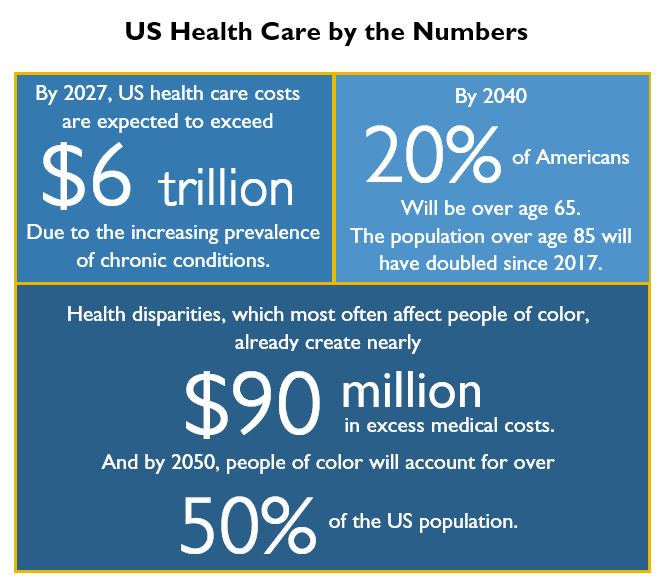

The US healthcare industry will face immense challenges in the coming years, including rising costs, higher numbers of older patients with longer life expectancies, and greater health disparities. Let’s look at it by the numbers: by 2027, US health care costs are expected to exceed $6 trillion, thanks in large part to the increasing prevalence of chronic conditions. By 2040, 20% of Americans will be over age 65, and the population over the age of 85 is expected to double in size from that of 2017. Health disparities, which most often affect people of color, already create nearly $90 billion in excess medical care costs, and by 2050, people of color will account for over 50% of the US population. The health care industry – health systems, health plans, and other at-risk organizations will need help in addressing the growing demands on health resources and contain the rise in cost of providing health care. There are a variety of ways the ACG System can help industry stakeholders prepare for the future.

Identifying Risk
The ACG System can quantify disease prevalence and identify other health care utilization patterns in a population or in specific groups. This helps providers zero-in on patients at highest risk for hospitalization, ER visits, or high pharmacy use. By identifying these key risks, the ACG System allows providers to employ differing strategies for engaging patients based on their risk level such as in preventative primary care, to improve quality of life and combat soaring health care costs.
Tracking Over Time
The ACG System’s suite of tools can track patients with chronic conditions over time, providing invaluable feedback about clinical performance, cost of care, and other quality outcome metrics. These tools can also be used to compare performance over time between providers and provider groups.
Focusing on Patients
The ACG System’s ability to combine a population-level view with patient-level behaviors and conditions paints a deeper, more holistic picture of an entire group, from the healthy patients with relatively minor health needs, to the sickest 5% in the population, who consume almost half of all healthcare resources.
Customizing Data
One of the highlights of the ACG System is its endless customizability. The system can easily integrate multiple streams of data together including administrative claims data, EMR data, biometrics, socio-economic information, geographic data, or health plan eligibility, to name a few. This diverse range of information can be used to segment the data to each user’s specific needs. Importantly, this also makes the System incredibly flexible and responsive to new information.
Follow Us